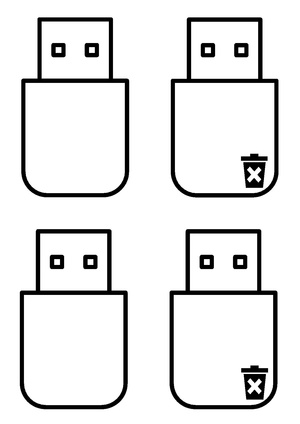Install party free software vs gender codes
From Gender and Tech Resources
| Title of the tutorial | Install party free software vs gender codes |
|---|---|
| Attributions | |
| Kind of learning session | Gender and Tech |
| Tutorial category | Icebreaking, Discussion |
| Duration (hours) | 1-2 "-2" can not be assigned to a declared number type with value 1.
|
| Learning objectives | - Increase the philosophical and political understanding of free software
- Understand and think about the possible parallels between free software and feminism / radical gender policies - Learning and sharing concepts around gender - Meet within a group - Create a live P2P system |
| Prerequisites | No prerequisite, the exercise is structured as a way to increase understanding of free software. This activity is good for a new group to get to know each other. |
| Methodology | 1) First briefly explain what an install party is and also explain P2P systems to share data (i.e. not mediated by a central server). Ask if participants in the room can explain those concepts in their own words. Then describe parallels between proprietary software systems where the code is closed and cannot be reviewed or modified and heterosexual sex-gender systems (we know how they work but we can not easily change them).
Brief discussion. (10 minutes) 2) Start the install party. Each person writes on post-its (or in a usb scheme, see document attached) concepts that have to do with gender, feminism, sexual dissidence, sexuality, or any specific knowledge/skills they can share with another person. One copy of these post-its / identifiers is posted on a wall and another on their body. After that every person writes a concept, situation, habit they want to remove or "un-install" (for instance patriarchy, sexism, transphobia etc) . They also stick one copy on their body and another one on the wall. (10 minutes) Give the group time to review the different concepts (installing and un-installing) on the wall. Check for repetitions and unify/cluster concepts. (10 minutes) 3) The installation begins. The group has to be divided into two groups, one will be the first "installers" and the other group will be "installed". The people in the "installed" group are individually choosing a concept they wish to install /learn and will have to look for the person who has that post it note on their body. Every person from the "installed" group then talks to their "installer" for 5 minutes. After this 5 minute session the "installed" person can become an "installer" of that concept to other persons, placing the post-it sign on their body. It is possible that during the installation several people want to install the same concept at the same time. If so, they can form a group where the "installer" can do a group installation. The dynamic is free and organic, the group adjusts to its own pace. Although this exercise is mainly about finding out about new concepts, it is also interesting to find new edges and perspectives to familiar concepts. The installation becomes an opportunity to exchange and amplify the understandings and practical experience around the freedoms of free software applied to gender codes. This exercise should last for about 40-60 minutes. Finish with a round of evaluation, impressions, and learnings (10 minutes) |
| Number of facilitators involved | 1-2 depending of the size of the group "-2dependingofthesizeofthegroup" can not be assigned to a declared number type with value 1.
|
| Technical needs | |
| Theoretical and on line resources | [[Theoretical and on line resources::One example in Spanish: http://medialab-prado.es/article/install_party_de_conceptos_p2p_degenerado
Install Party definition: https://en.wikipedia.org/wiki/Linux_user_group#Installfests P2P definition: https://en.wikipedia.org/wiki/Peer-to-peer |
